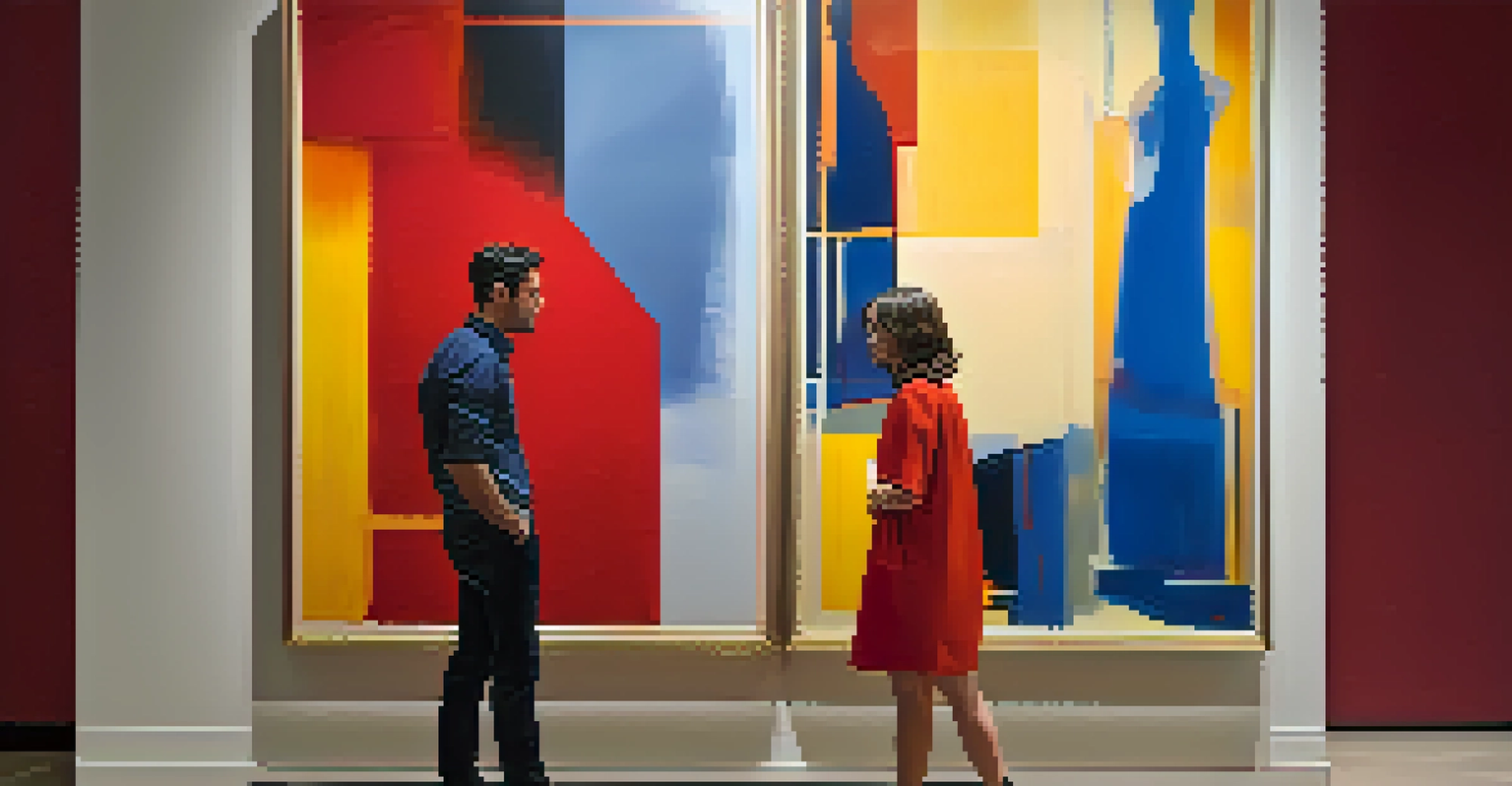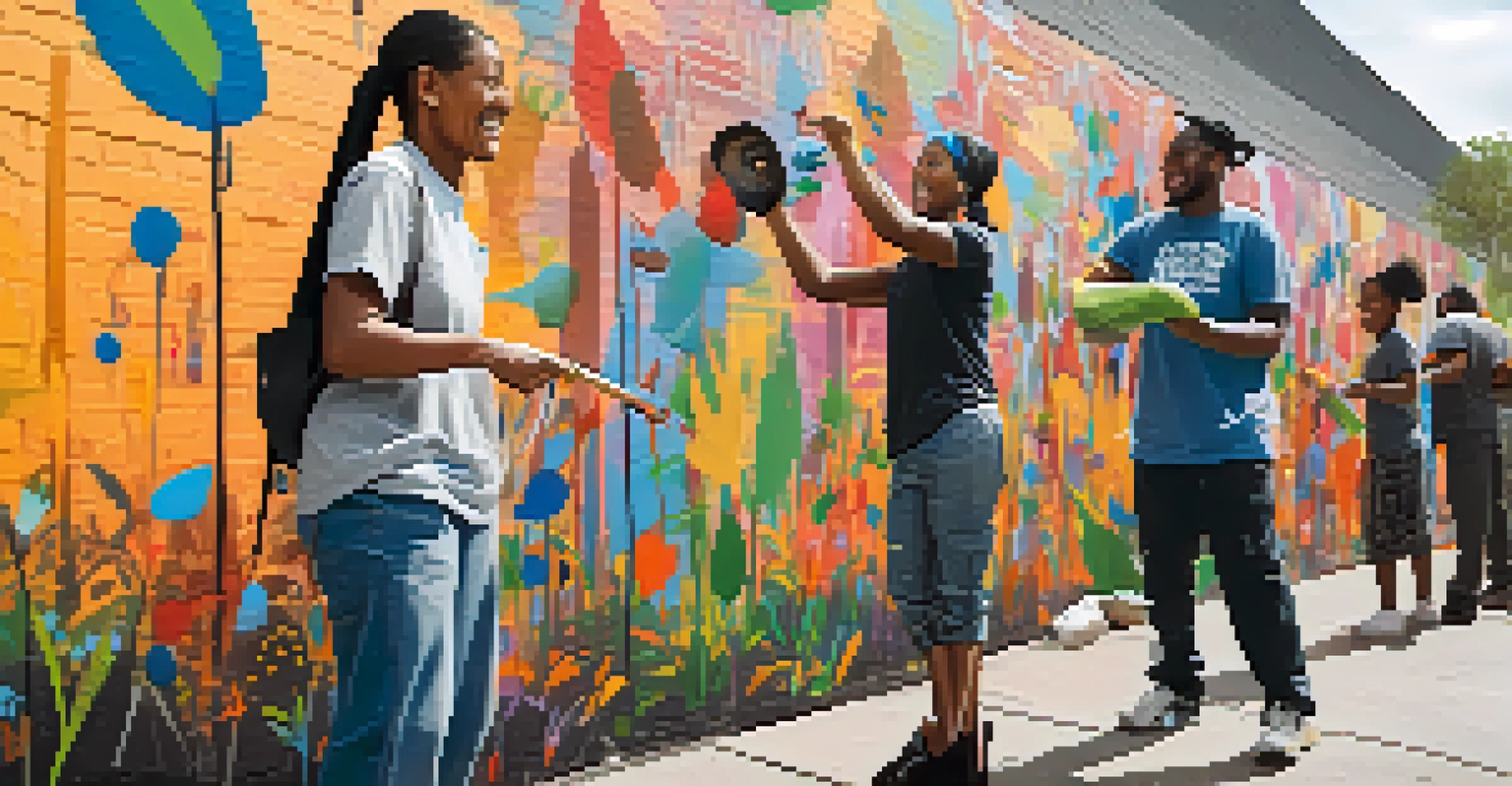Exploring the Relationship Between Art and the Viewer

Understanding the Viewer’s Perspective in Art
Every piece of art tells a story, but the interpretation lies in the viewer's perspective. When an individual stands before a painting or sculpture, their unique experiences and emotions shape how they perceive the artwork. This connection can vary widely, as two people may see the same piece yet feel completely different things.
Art is not freedom from discipline, but disciplined freedom.
For instance, a vibrant landscape might evoke feelings of joy for one person while triggering bittersweet memories for another. This illustrates how deeply personal and subjective the experience of viewing art can be. The viewer's background, culture, and even mood play significant roles in this interpretation.
Related Resource
Ultimately, understanding the viewer's perspective is crucial for artists. It encourages them to consider how their work might resonate with diverse audiences, enriching the dialogue between the artwork and the viewer.
The Emotional Impact of Art on Viewers
Art has a remarkable ability to evoke emotions, often striking a chord in the viewer's heart. Whether it’s a piece that makes you smile or one that brings tears to your eyes, this emotional connection is fundamental to the experience of art. Think of a powerful photograph that captures a fleeting moment; it can transport you back to a similar experience in your life.

This emotional engagement isn’t just a personal reaction; it’s a shared human experience. Artists often aim to tap into universal emotions, creating a bridge between their work and the viewer’s feelings. This connection can foster empathy, understanding, and even catharsis.
Viewer Perspective Shapes Art
The interpretation of art is deeply influenced by the viewer's unique experiences and emotions.
Moreover, art can serve as a mirror, reflecting societal issues and personal struggles. This reflection can provoke strong reactions, prompting viewers to think critically about their own lives and the world around them.
Art as a Catalyst for Discussion and Reflection
Art often sparks conversations, encouraging viewers to engage in dialogue about its themes and messages. When people come together to discuss a painting or installation, they share perspectives that can deepen their understanding of the artwork. This communal exploration can foster insights that one might not achieve alone.
Every artist dips his brush in his own soul, and paints his own nature into his pictures.
Take, for example, a thought-provoking piece that comments on social justice. Such art can inspire discussions about important issues, inviting viewers to reflect on their beliefs and the world they inhabit. This process of discussing and reflecting can lead to personal growth and societal change.
Related Resource
In this way, art transcends mere aesthetics; it becomes a platform for dialogue, challenging viewers to think critically and engage with the world around them.
The Role of Context in Art Interpretation
When viewing art, context is everything. The environment in which an artwork is displayed can significantly influence how it is perceived. For instance, a piece in a bustling gallery might evoke different feelings than the same piece in a quiet, intimate setting.
Additionally, the historical and cultural context surrounding a work of art also plays a crucial role. Understanding the time period or the artist's background can add layers of meaning that enrich the viewer's experience. This context can transform a simple image into a rich tapestry of connections and narratives.
Art Evokes Strong Emotions
Art has the ability to stir emotions, creating a shared human experience that fosters empathy and understanding.
Ultimately, recognizing the importance of context helps viewers appreciate art more deeply. It encourages them to consider not just what they see, but also why it resonates with them in a particular way.
The Influence of Personal Experiences on Art Perception
Each viewer brings their own life experiences to the table when engaging with art. This personal history can color their interpretation and emotional response. For instance, someone who has traveled widely may find a piece that reflects a specific culture particularly resonant, while another may see it as foreign and unfamiliar.
These varying interpretations highlight the diversity of human experience. Artists often draw inspiration from their own backgrounds and stories, creating works that can resonate differently with each viewer. This interplay of experiences enriches the viewing experience and fosters a deeper connection.
Related Resource
Understanding this influence can also encourage empathy among viewers. Recognizing that others may see the same piece through a different lens can foster appreciation for diverse perspectives.
Art and the Journey of Self-Discovery
Engaging with art can be a profound journey of self-discovery for many viewers. As individuals immerse themselves in different artworks, they often uncover hidden emotions or thoughts they may not have been aware of. This aspect of art can act as a mirror, reflecting inner feelings and desires.
For example, a piece that evokes nostalgia might prompt someone to explore memories from their past, leading to personal insights. This deeper connection can make the experience of viewing art not just enjoyable but transformative.
Art Fosters Community Connections
Engaging with art can unite individuals, creating a sense of community and encouraging meaningful dialogue.
Through this process, art encourages viewers to explore their identities and beliefs, fostering a greater understanding of themselves and their place in the world.
The Role of Art in Fostering Community and Connection
Art has the power to unite people and foster a sense of community. Shared experiences in galleries or public installations create bonds among viewers, as they collectively engage with the artwork. This sense of togetherness can lead to discussions that strengthen connections between individuals.
Consider community art projects that invite local residents to collaborate on a mural. Such initiatives not only beautify spaces but also forge relationships, as participants share their visions and stories. This collaborative process highlights how art can serve as a communal language.

Ultimately, art’s ability to foster connection speaks to its importance in society. It reminds us that despite our differences, we can find common ground through shared experiences and creativity.